A Weekend With the Canon 5D Mark IV
My brief encounter with Canon’s most versatile flagship.
“I’d like the 50mm f/1.2L and the 35mm f/1.4L Mark II, please.”
“I’m afraid those are already out.”
“That’s okay, I’ll take the Sigma ART equivalents instead!”
“Also out—sorry!”
“Oh.”
I’m on the phone with the rental place and feeling the consequences of my impulsive decision.
I’m renting a Canon 5D Mark IV for the weekend, but almost all their lenses are rented out. It’s already Friday afternoon and demand is high.
“So all your 35s are out, all your 50s are out, all your 85s are out, and you have no zooms left either.”
“We do have the Sigma 24mm f/1.4 ART! And actually we just had someone return the 85mm f/1.8.”
“I’ll take them!”
“The 85 won’t be anywhere near as sharp as the 24…”
“I know.”
And so it was that I began my weekend with Canon’s most versatile flagship camera and a very strange pairing of lenses covering the outer edges of my normal focal range.
Why Canon? Last week, we rented one for a video shoot and I ended up not having the opportunity to try it out for photography at all. But I was intrigued and left with strong pangs of nostalgia for my beloved 5D Mark II.
What can I say…old habits die hard.
Day 1: An Evening Walk in the Park
I brought the kit home around 5pm and walked right back out the door with it to take some photos in the ravine near my apartment.
I wanted to know three things right off the bat:
- Whether the ergonomics had changed versus my old 5D Mark II or Shannon’s Mark III
- How the touchscreen works in practise
- How good the AF and metering systems had become in the time since I last shot Canon
Before I managed to answer those questions, I was reminded of how different it is to shoot with a DSLR vs. a mirrorless camera. And I don’t just mean using an optical viewfinder instead of an EVF or screen (I have an OVF on my X-Pro 2, after all). No, what struck me was how much less forgiving it is in terms of shooting technique, and how different DSLR lens performance is versus mirrorless.
The 5D Mark IV’s new 30MP sensor records a lot of detail, but you need to put good glass in front of it for that to translate into good results (duh). However, unlike a mirrorless system, that’s not the only hurdle. I’m pretty sure that both the Sigma 24mm and Canon 85mm that I rented were in serious need of focus adjustment, which meant that I wasn’t hitting full sharpness potential all weekend, and shots that the camera thought were “in focus” were…not quite so.
I don’t miss micro-adjusting lenses, even though the software for it has come a long way since I was last in the ecosystem.
Since these were rentals, I had no intention of taking the time to adjust them, so I made do with what I got and went on shooting.
Let’s see some images, shall we?
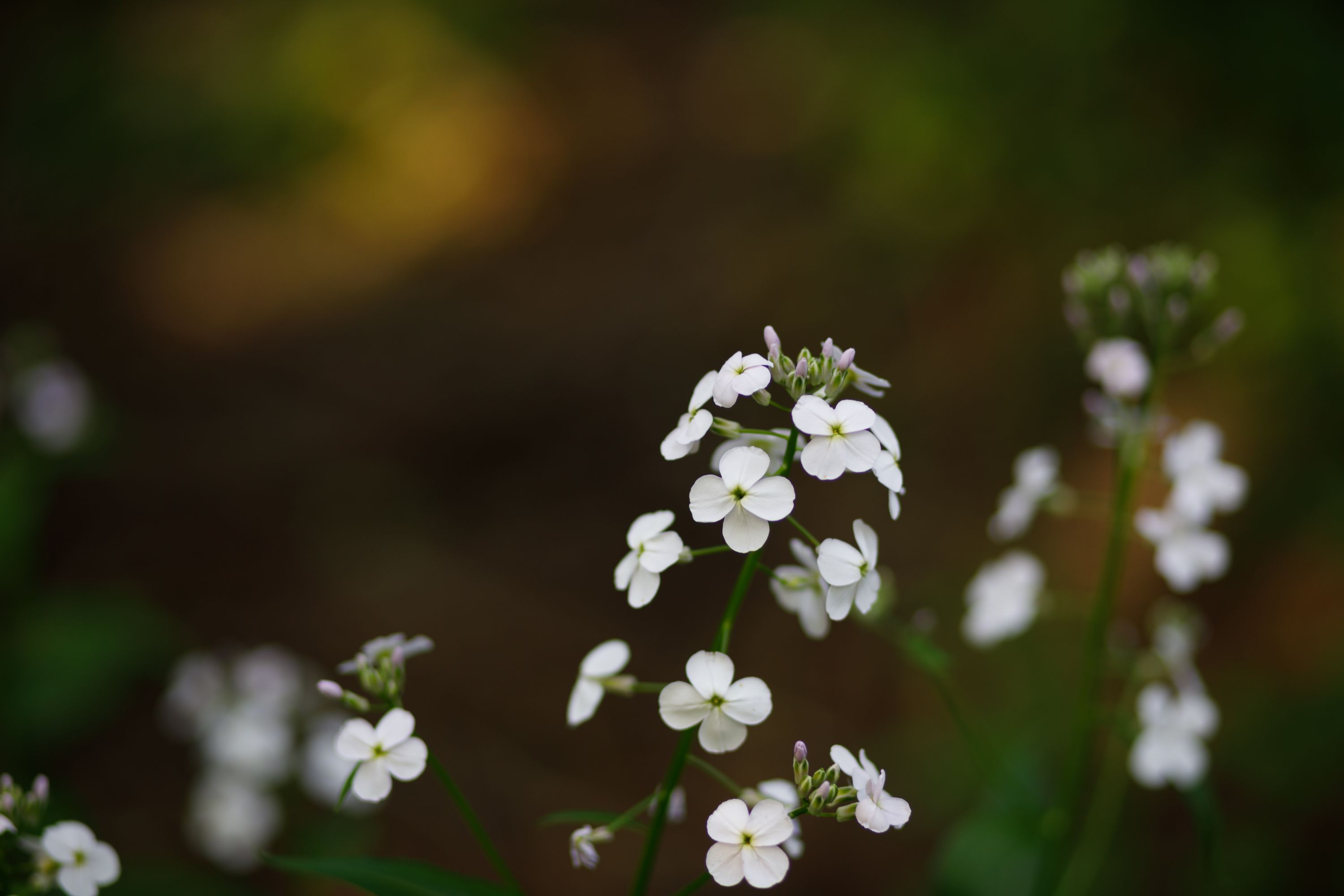 85mm ƒ/1.8, shot at ƒ/2 at 1/80th, ISO 160. This is a JPG with the Canon Standard profile straight out of Lightroom, with no adjustments made.
85mm ƒ/1.8, shot at ƒ/2 at 1/80th, ISO 160. This is a JPG with the Canon Standard profile straight out of Lightroom, with no adjustments made.
My first impression was: wow. These colours! I know, I know, I’m a big fan of the Fujifilm colour simulations, but this feels like a huge step forward for Canon. Gone is the frustrating warm bias that annoyed me on my Mark II, and in its place is just: colour. Not a simulation of film, not an art effect, just…the actual colour of the thing.
 85mm ƒ/1.8, shot at ƒ/2 at 1/125th, ISO 100. This is a JPG with the Canon Standard profile straight out of Lightroom, with no adjustments made.
85mm ƒ/1.8, shot at ƒ/2 at 1/125th, ISO 100. This is a JPG with the Canon Standard profile straight out of Lightroom, with no adjustments made.
I was also immediately impressed by the metering, which answered my third question. In both evaluative and centre-weighted, the 5D metered with much more accuracy than my X-Pro 2 does. On my Fujifilm cameras, I almost always find myself riding the exposure compensation dial to account for its tendency to underexpose, and even then the files are often too dark when I pull them off the card for processing.
With the 5D Mark IV, my exposures were bang on. Every time.
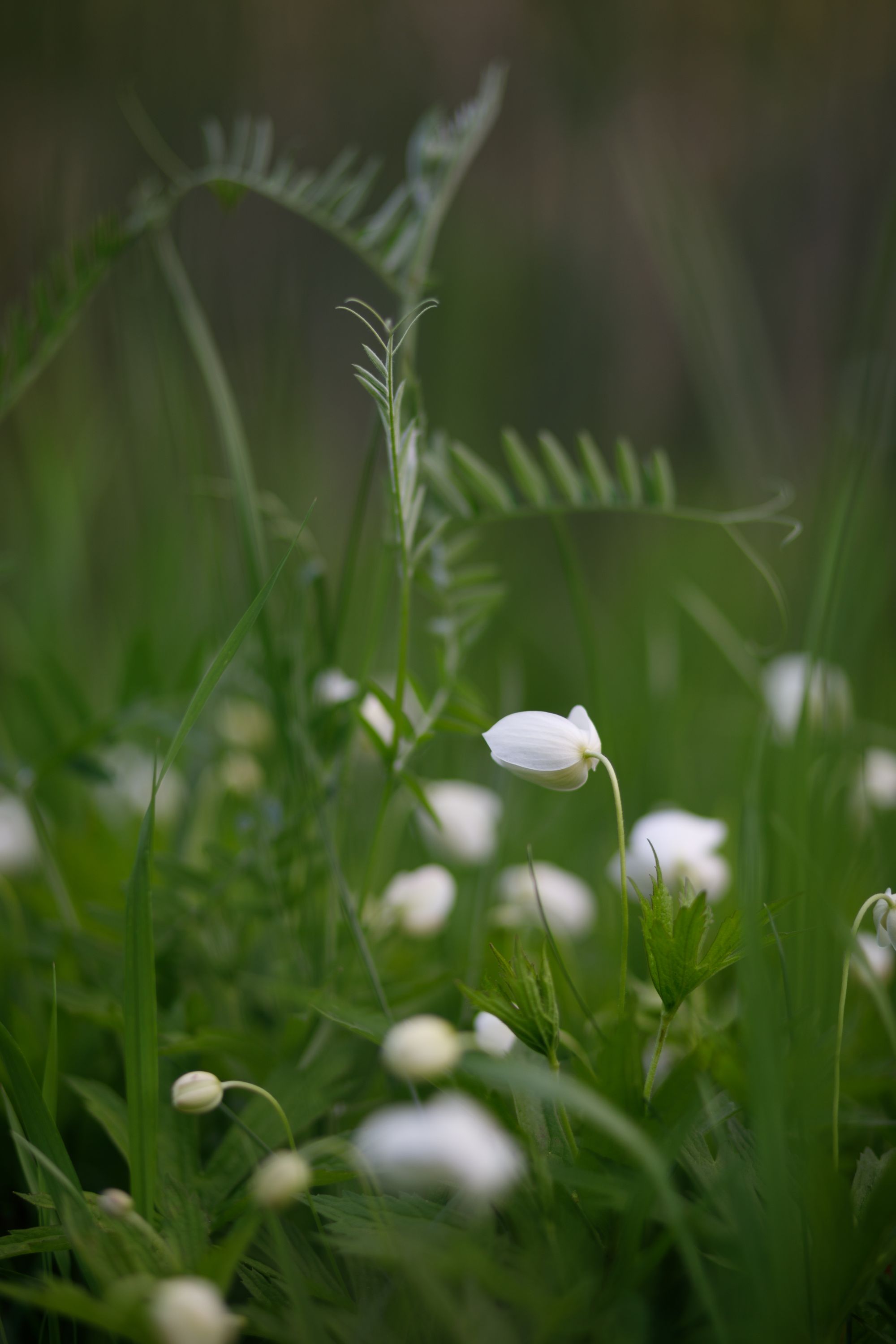 85mm ƒ/1.8, shot at ƒ/2 at 1/250th, ISO 100. This is a JPG with the Canon Standard profile straight out of Lightroom, with no adjustments made.
85mm ƒ/1.8, shot at ƒ/2 at 1/250th, ISO 100. This is a JPG with the Canon Standard profile straight out of Lightroom, with no adjustments made.
Dynamic range is also improved over previous generations. On balance, I’d say it’s about on par with my X-Pro 2 at this point; inferior at recovering shadows but better at recovering highlights. But the full frame sensor allows for less overall noise at low ISOs, and you have a few extra megapixels worth of resolution to work with, so IQ ends up being better.
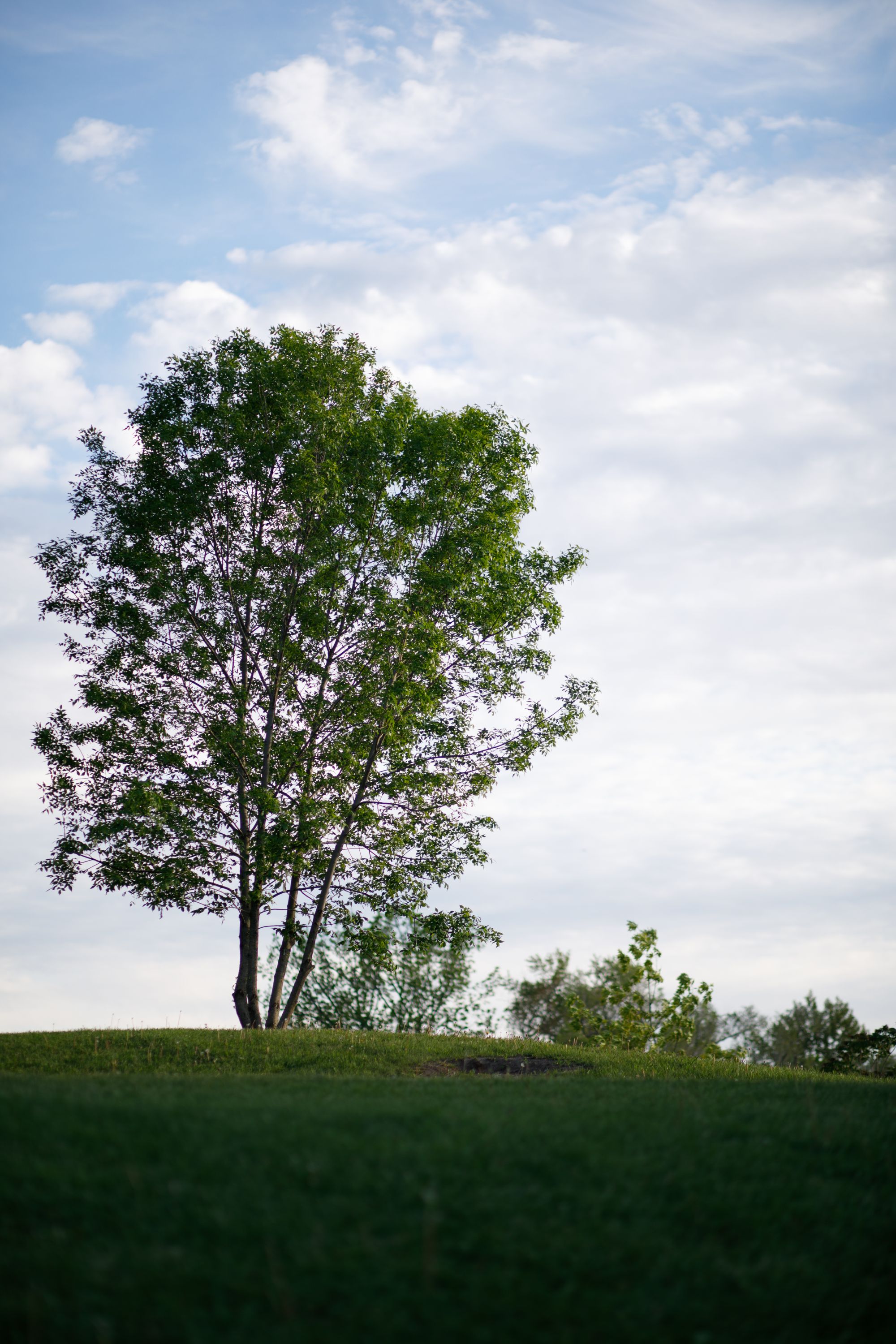 85mm ƒ/1.8, shot at ƒ/1.8 at 1/1,000th, ISO 100. This version is straight from the camera (Canon Standard profile)
85mm ƒ/1.8, shot at ƒ/1.8 at 1/1,000th, ISO 100. This version is straight from the camera (Canon Standard profile) 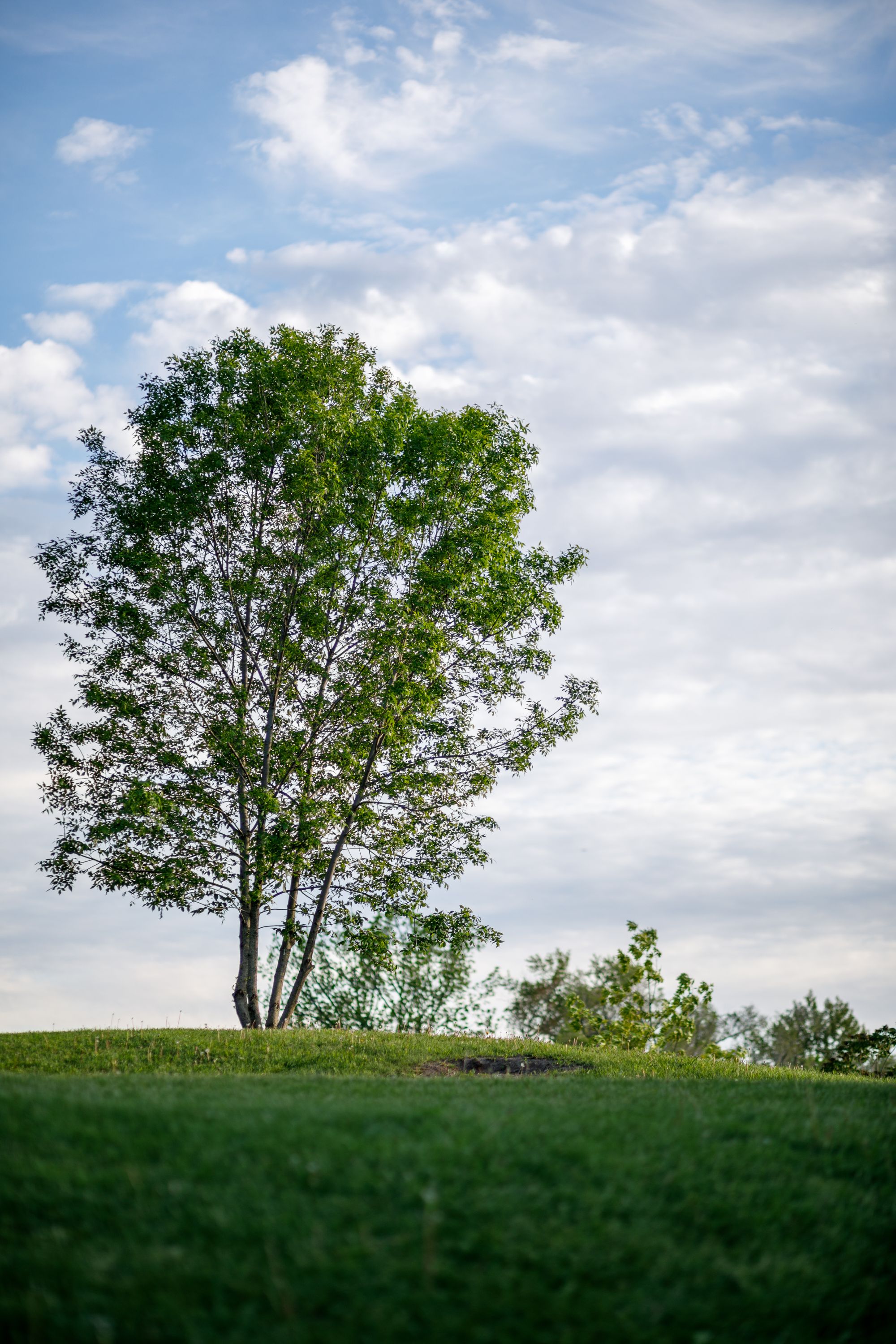 A quick edit of the same shot that I made in Lightroom, primarily recovering the highlights and shadows a bit, and getting rid of the (horrible) chromatic aberrations from the 85mm lens.
A quick edit of the same shot that I made in Lightroom, primarily recovering the highlights and shadows a bit, and getting rid of the (horrible) chromatic aberrations from the 85mm lens.
If I had taken the time to calibrate the lenses, or shot with the best of the best in Canon’s lens line-up, I have no doubt that I would prefer the 5D Mark IV sensor’s output, especially since the standard Bayer array means less post-processing hassle. That being said, the difference is not vast, and taking into account the huge price gulf between that fabled Canon setup and my current Fujifilm one, I think it’s safe to say that mirrorless makes a very compelling value proposition these days.
Day Two: A Day Hike in Northern Ontario
Saturday was a photo day. A friend and I had planned it weeks in advance, and it was part of the reason I chose this weekend for my impulsive rental.
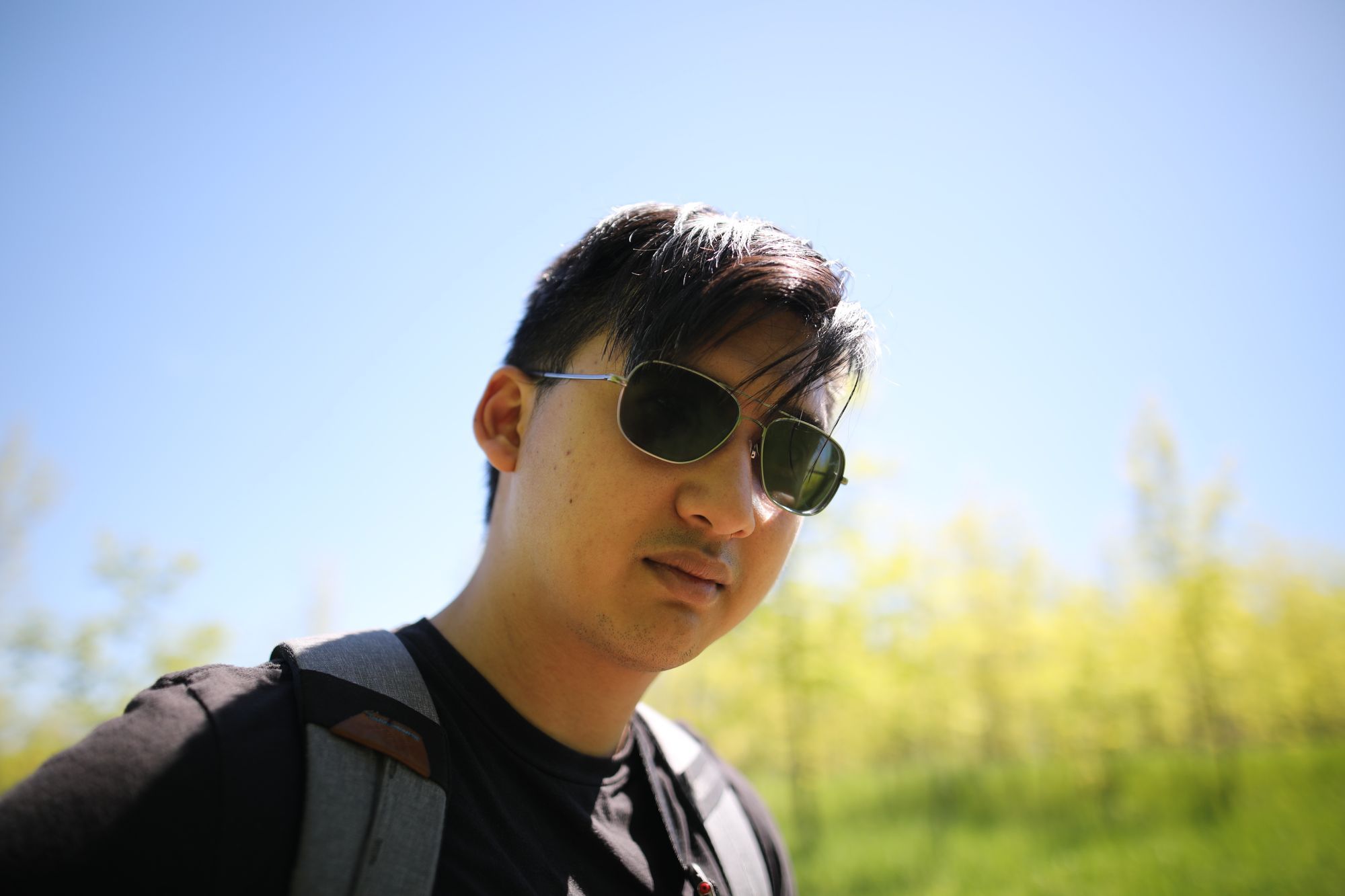 24mm ƒ/1.4 shot at ƒ/1.4 at 1/2000th, ISO 100. This is a JPG with the Canon Standard profile straight out of Lightroom, with no adjustments made.
24mm ƒ/1.4 shot at ƒ/1.4 at 1/2000th, ISO 100. This is a JPG with the Canon Standard profile straight out of Lightroom, with no adjustments made.
We headed to a scenic Provincial Park in the morning and spent the day making our way through, aiming for a waterfall at the end. He, a fellow Fujifilm shooter, was shooting his new X-T2, so we were both exploring new gear.
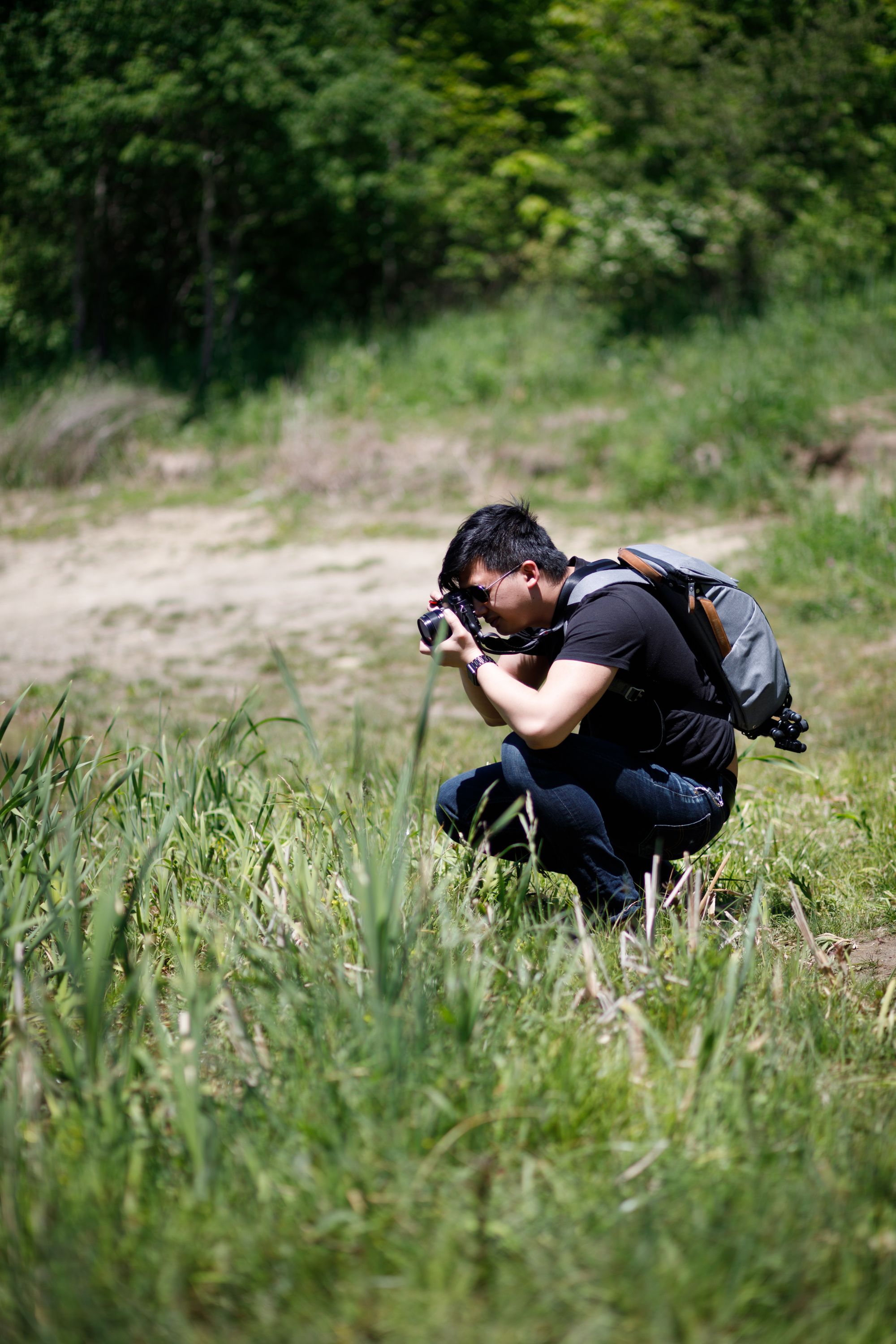 85mm ƒ/1.8 shot at ƒ/2 at 1/3,200th, ISO 100. This is a JPG with the Canon Standard profile straight out of Lightroom, with no adjustments made.
85mm ƒ/1.8 shot at ƒ/2 at 1/3,200th, ISO 100. This is a JPG with the Canon Standard profile straight out of Lightroom, with no adjustments made.
Since we were hiking all day, this seems like a good moment to answer my first question. Have the ergonomics changed? In short: yes.
The 5D Mark IV is noticeably lighter than the Mark III—which I didn’t expect—and while it’s still beastly compared to any of the mirrorless options I’ve tried, it’s a very manageable size for a DSLR. I carried it and my ThinkTank Retrospective 10 all day and was more annoyed by the bag than the camera (because I wish I had just pocketed the other lens instead of having a mostly-empty bag).
The weight was perfectly fine with either of the two lenses mounted. Not as light as a mirrorless system, obviously, but I wasn’t aching by the time evening fell.
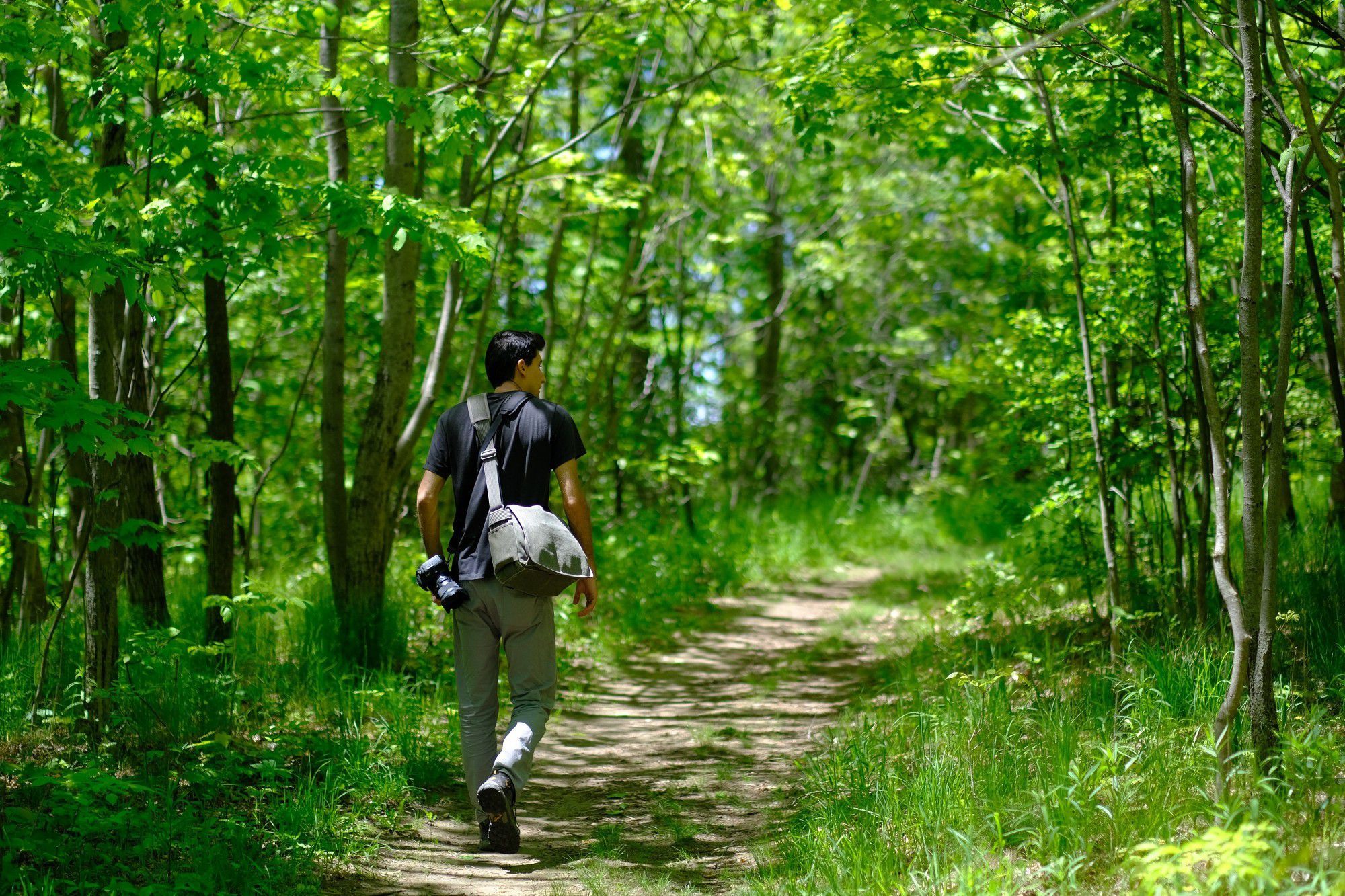 A wild Marius in his natural environment. My thanks to Thomas for this shot (X-T2 + 56mm ƒ/1.2)!
A wild Marius in his natural environment. My thanks to Thomas for this shot (X-T2 + 56mm ƒ/1.2)!
Day two gave me an opportunity to try out the new touchscreen and connectivity features in more detail. The rear LCD is stunning; sharp, bright, and colourful. The touch functionality is remarkably refined, making me appreciate that Canon took their time to find a good implementation. Everything from navigating menus and changing settings to pinching and scrolling through photos feels responsive and natural. Like it’s the way it should be done.
The screen is also how you interact with the Dual Pixel autofocus technology, which made its debut in earlier camera models and has continued to spread. Everything you’ve read about how it being amazing is true. The speed, accuracy, and confidence of focus in Live View is so much better than what it once was that it’s almost not comparable. More than that though: it’s part of a total autofocus package that’s more confident, more accurate, and more precise than any mirrorless AF system I’ve tried so far.
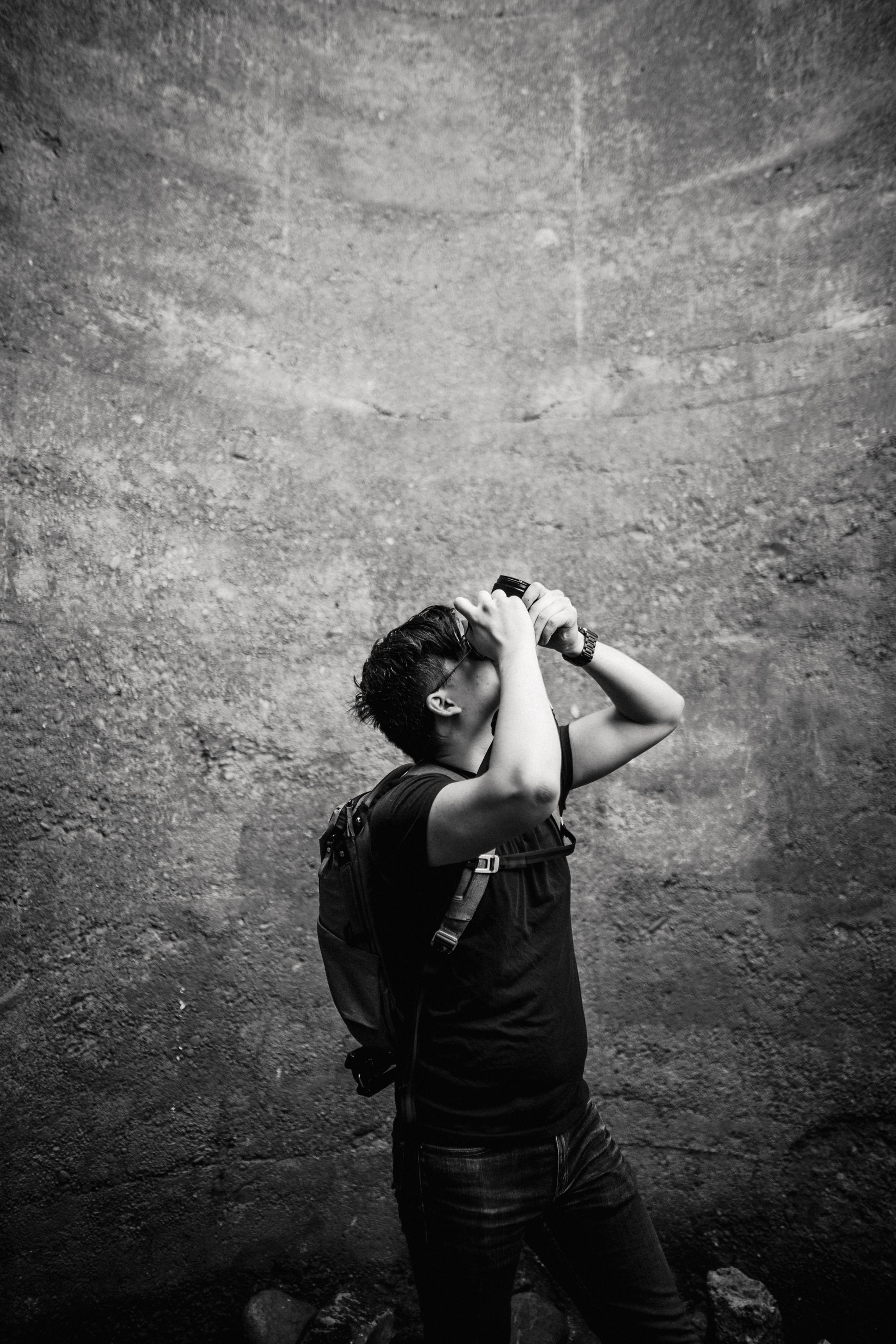 24mm ƒ/1.4 shot at ƒ/1.4 at 1/200th, ISO 100. Files respond very well to post-processing, and I was particularly happy with B&W conversions.
24mm ƒ/1.4 shot at ƒ/1.4 at 1/200th, ISO 100. Files respond very well to post-processing, and I was particularly happy with B&W conversions.
With this technology, Canon effectively gives users the “best of both worlds” in the sense of having the precision and instant-preview of mirrorless phase-detect systems, while also maintaining its refined mirror-based focusing system. Both are now at a stage where focus errors are much more likely to be the fault of the user than the camera.
The camera features WiFi now, which I’ve gotten very used to in the mirrorless world. With the Canon 5D Mark IV, it feels especially great because of how exceptional the JPGs are right out of the camera. That new metering system means no exposure adjustments needed. Sure, they don’t look like film, but they look good. The only downside is that there’s no easy way to turn WiFi on and off, so you have to do some menu diving to get to it. You can assign networking stuff to your My Menu though and access it more quickly that way.
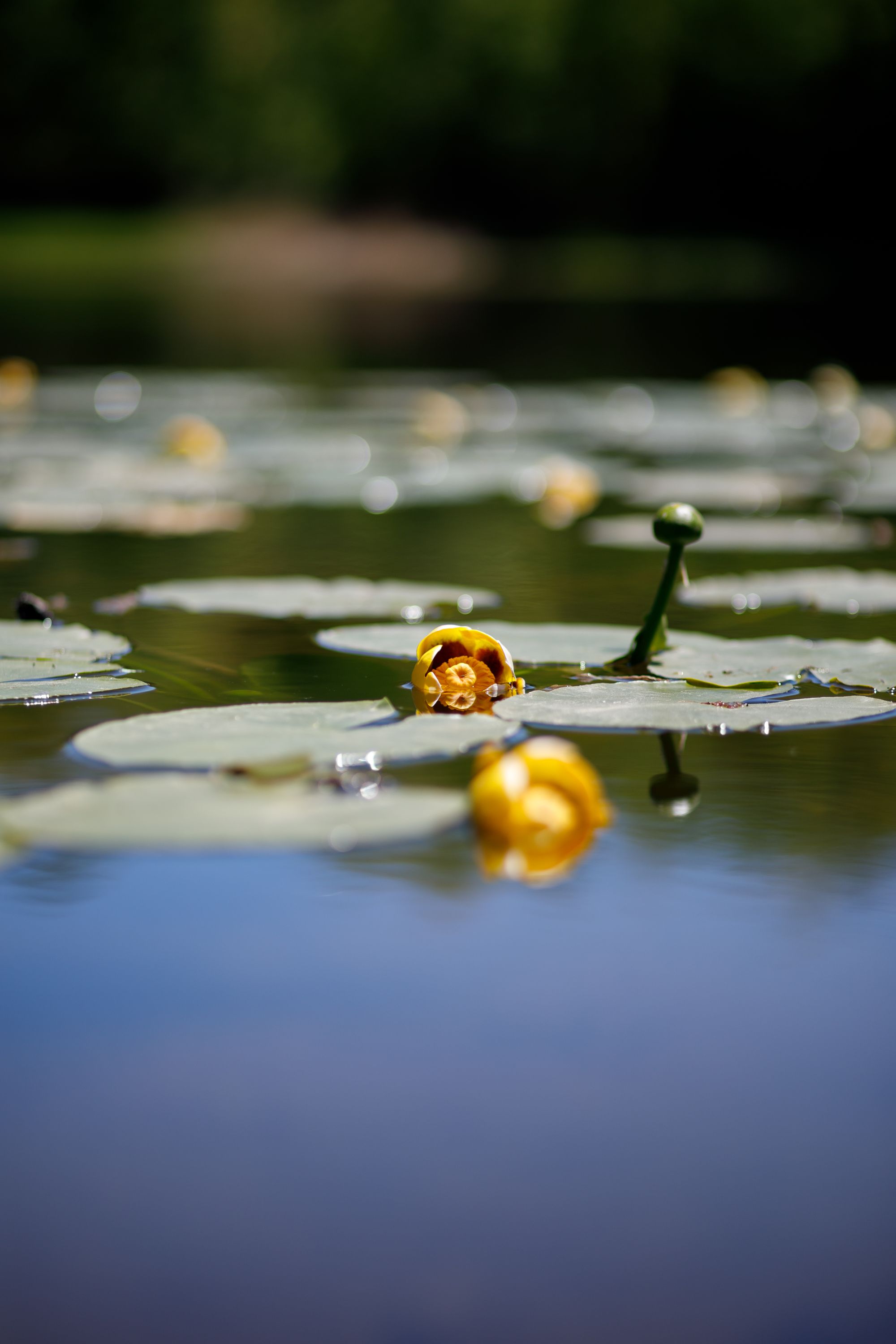 85mm ƒ/1.8 shot at ƒ/2 at ¼,000th, ISO 100. This is a JPG with the Canon Standard profile straight out of Lightroom, with no adjustments made. You can see more of the 85’s significant colour fringing in the highlights, though this is a relatively mild example.
85mm ƒ/1.8 shot at ƒ/2 at ¼,000th, ISO 100. This is a JPG with the Canon Standard profile straight out of Lightroom, with no adjustments made. You can see more of the 85’s significant colour fringing in the highlights, though this is a relatively mild example.
This is also my first camera with onboard GPS (besides the iPhone). I guess I understand why people are frustrated by a feature that offers a niche benefit while potentially impacting battery life significantly, but I love it. Seeing geolocation information in Lightroom without having to do any weird phone tethering is awesome, and the hit to battery life just isn’t meaningful to me.
Battery life, as you might expect, is in a different league compared to modern mirrorless (with the possible exception of the E-M1 Mark II). When Thomas was changing out his first dead battery, I hadn’t even made a dent in mine, and by the end of the day I still had plenty of charge left on the single battery I had been using.
For reference, I kept the camera on the entire day (except for brief lens swaps) with GPS active (set to 1 minute polling) and fairly frequent use of Live View to enjoy that Dual Pixel Autofocus goodness. I can easily see myself making it through a day of shooting on one battery, and that’s all I’ve ever asked for.
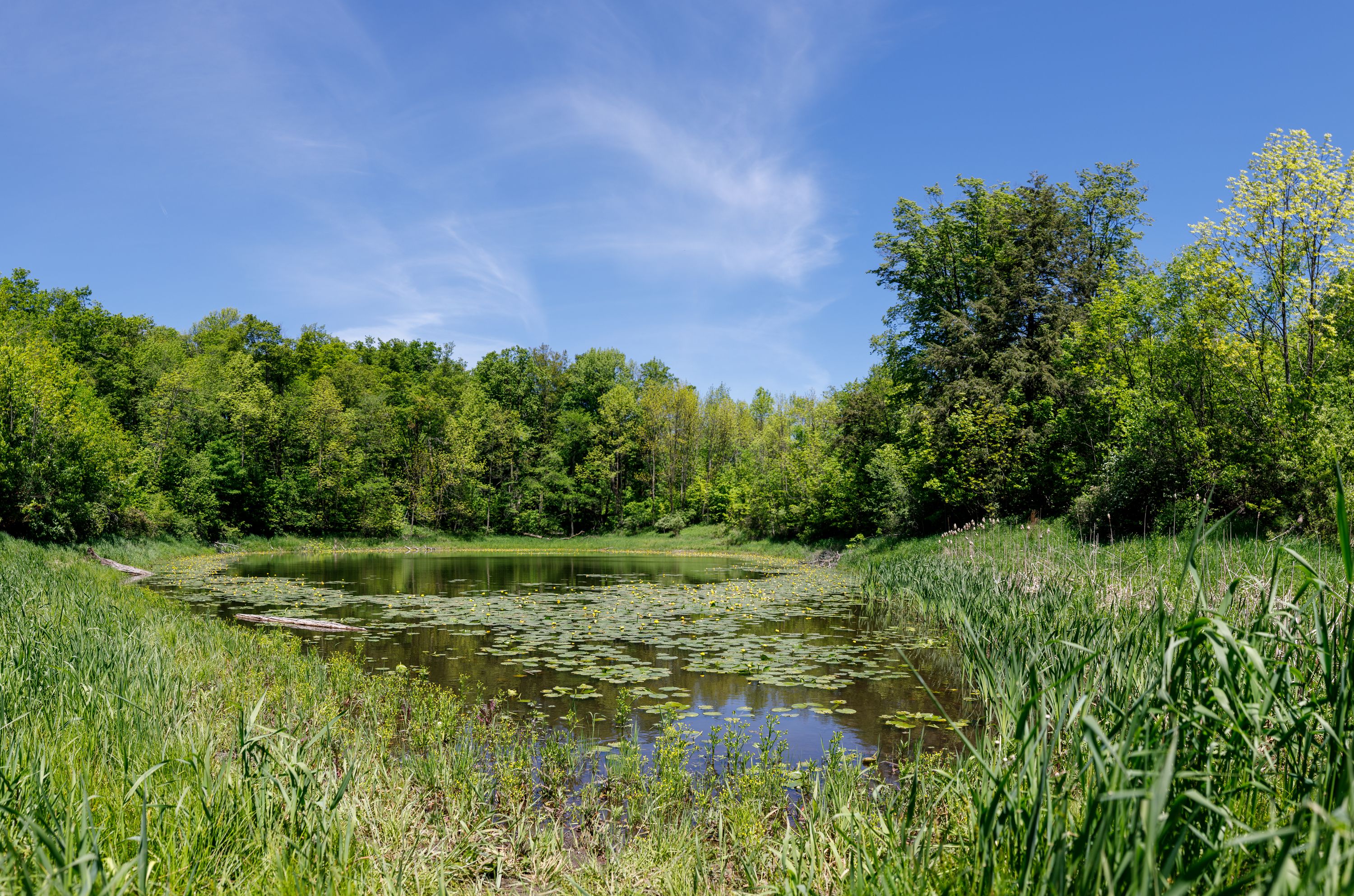 24mm ƒ/1.4 shot at ƒ/4.5 at 1/500th, ISO 100. This is a three-shot panorama, stitched in Lightroom. The full image is about 7800x5200 pixels after cropping.
24mm ƒ/1.4 shot at ƒ/4.5 at 1/500th, ISO 100. This is a three-shot panorama, stitched in Lightroom. The full image is about 7800x5200 pixels after cropping.
Day Three: Another Hike, a Different Place
Sunday saw Shannon and I venturing up north to visit a couple of communities northwest of Toronto.
(By the way, if you’re ever near Erin, Ontario, you should visit Holtom’s Bakery…best bumble berry tarts and raspberry turnovers I have ever tasted!)
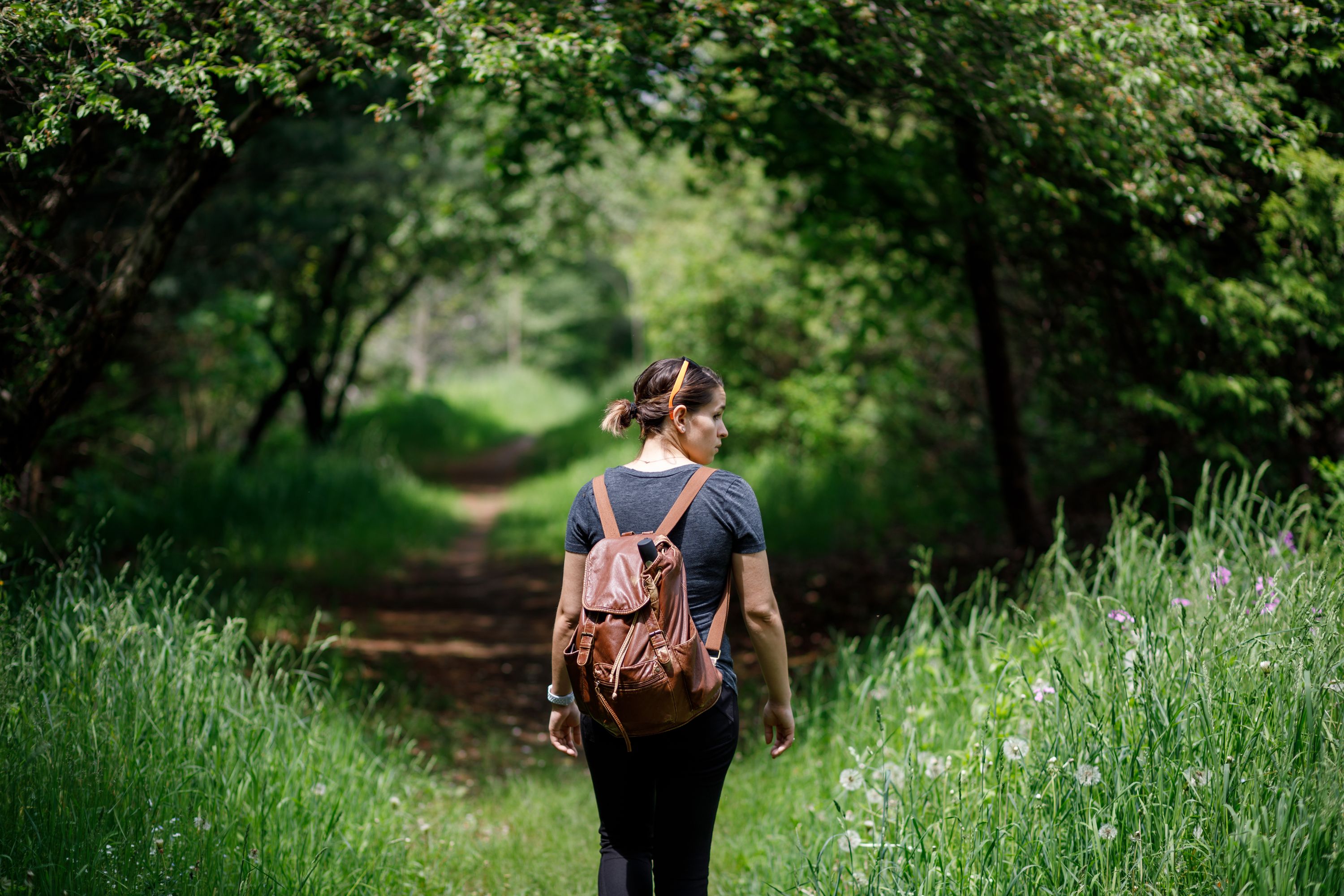 85mm ƒ/1.8 shot at ƒ/2.2 at 1/1,250th, ISO 100. This is a JPG with the Canon Standard profile straight out of Lightroom, with no adjustments made.
85mm ƒ/1.8 shot at ƒ/2.2 at 1/1,250th, ISO 100. This is a JPG with the Canon Standard profile straight out of Lightroom, with no adjustments made.
Having gotten a better handle on the core feature set of the camera, I used this day to explore some deeper configuration options, which is what led me to the incredible back-button autofocus capabilities of the 5D Mark IV.
Back-button autofocus works by de-coupling metering from focusing and shooting. So instead of half-pressing the shutter to meter and focus, it just does the former. Then the AF-On button round back handles focusing. That gives you lots of flexibility as is, but the 5D Mark IV reveals the full potential of this approach by letting you customize all three of its back buttons.
 85mm ƒ/1.8 shot at ƒ/2.2 at 1/200th, ISO 500. With a better lens selection, I can see the potential for a tremendous amount of detail being captured.
85mm ƒ/1.8 shot at ƒ/2.2 at 1/200th, ISO 500. With a better lens selection, I can see the potential for a tremendous amount of detail being captured.
Each one can have its own focus area (single point, zone, tracking, etc.), its own focus mode (single shot, continuous, etc.), and more. I set the AF-On button to single shot AF with a single point, and then the star button beside it to a fairly small zone with continuous focus.
In practise, this meant that for static subjects I could use the AF-On button to focus, but if a bird or other interesting moving subject came into view, I could immediately grab onto it, track it, and shoot…just by pressing the star button instead! No changing modes, no adjusting settings. One-touch operation in two vastly different contexts.
 85mm ƒ/1.8 shot at ƒ/2.2 at 1/1,320th, ISO 100. This is a great example of the kind of shot I was able to grab with the back-button focus options I’d set up. I was shooting the purple flowers behind the tree when this chipmunk showed up, and I was able to track him as he climbed, firing this shot as he paused to look at me.
85mm ƒ/1.8 shot at ƒ/2.2 at 1/1,320th, ISO 100. This is a great example of the kind of shot I was able to grab with the back-button focus options I’d set up. I was shooting the purple flowers behind the tree when this chipmunk showed up, and I was able to track him as he climbed, firing this shot as he paused to look at me.
The rabbit hole goes deeper. There are three buttons plus the standard shutter half-press that you can set this way, each with its own settings, and this configuration is saved to the camera’s Custom Settings…of which there are three. In theory, this means you could configure 12 different focusing behaviours and access four at a time from each Custom Setting—instantly.
I don’t think this is unique to the 5D Mark IV, by the way, but it’s the first Canon that I’ve used to have it.
Either way, it’s one of many little details that drive home Canon’s claim of being a professional tool.
 24mm ƒ/1.4 shot at ƒ/1.4 at 1/1,600th, ISO 100.
24mm ƒ/1.4 shot at ƒ/1.4 at 1/1,600th, ISO 100.
Take-Aways
I returned the 5D Mark IV and the two lenses this morning.
For all the appeal of mirrorless systems, I was reminded of why DSLRs remain such an important part of the photographic world. Much of the appeal lies not in the actual photographic mechanism, but in the design goals and the fruits of many decades experience.
If Canon were to make a mirrorless body with the same form factor and capabilities as their 5D line, I think it would forever change the landscape. And maybe they will, but probably not for a while…slow and steady they may be, but their products are always more than the sum of their parts.
On paper, the 5D Mark IV is widely considered a disappointment. The sensor is generations behind Sony and Nikon in terms of dynamic range, the resolution is also comparatively modest, the video system feels deliberately crippled, and the entire thing still has a flappy mirror bit inside.
And yet…picking it up, shooting with it, it becomes clear why these cameras remain the most popular choice for professionals across a wide range of photographic niches. The 5D Mark IV is a serious piece of kit, utterly reliable, built like a tank, and equipped with powerful AF and metering systems that deliver shot after shot perfectly exposed, in perfect focus.
If you can deal with the weight, the cost, and the additional hassle of dealing with mirrors and the associated lens adjustment hassle it brings, DSLRs remain supreme imaging tools, and the Canon 5D Mark IV is the one I would want to own.